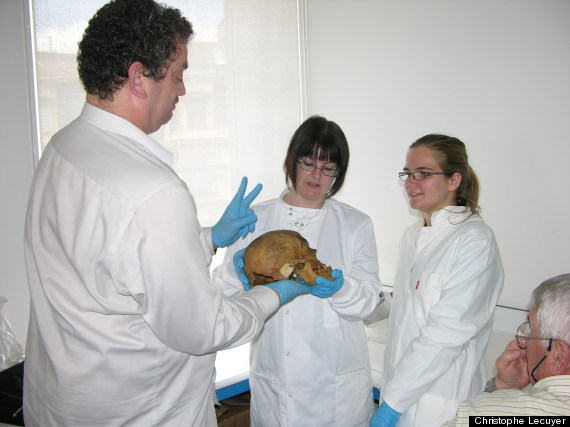
Thousands of years after their owners' mouths stopped moving forever, the teeth of Egyptian mummies are telling scientists details about their civilization.
After analyzing the oxygen isotope levels in teeth recovered from the mummies, researchers at the Université de Lyon in France were able to determine that the ancient Egyptians endured an extensive period of drought.
Scientists have long attempted to link the Egyptian civilization's rise and fall to changes in climate, but they've been stymied by gaps in Nile River sediment records and historical accounts.
The mummy research, carried out over several years, involved drilling tiny holes in the teeth and bones of mummies housed at the Musée des Confluences de Lyon in France. Bone and enamel samples were then tested for two oxygen isotopes.
Changes in the isotopic ratios showed researchers that, for a time, the region was subjected to extremely dry conditions.
"Climate changes can be tracked through the oxygen isotope fractionations," the researchers wrote about their findings. "We show that [the oxygen isotope composition of meteoric waters] increased progressively from the Predynastic Period (∼5500 B.P.) to the Late Period (2550 B.P.), reflecting a decrease in the amount of precipitation at the sources of the Nile and/or an increase in temperature and evaporation."
Essentially, the teeth revealed a drought spanning thousands of years, resulting from a decrease in rain coupled with temperature increases. Ultimately, the region might have seen a temperature increase of 2 degrees Celsius or a precipitation decline of 140 millimeters a year.
Researcher Christophe Lécuyer told The Huffington Post that while he had expected to find evidence of long-term climate change, he was "rather surprised by the amplitude of the drought trend."
The inhabitants of the Nile region apparently carried on despite the drought.
"Egyptian civilization was remarkable in its long-term stability despite a strong environmental pressure — increasing aridity — that most likely put constraints on the development of resources linked to agriculture and cattle breeding," Lécuyer told LiveScience.
The findings were published June 2 in the journal Earth and Planetary Science Letters.
PHOTOS:


